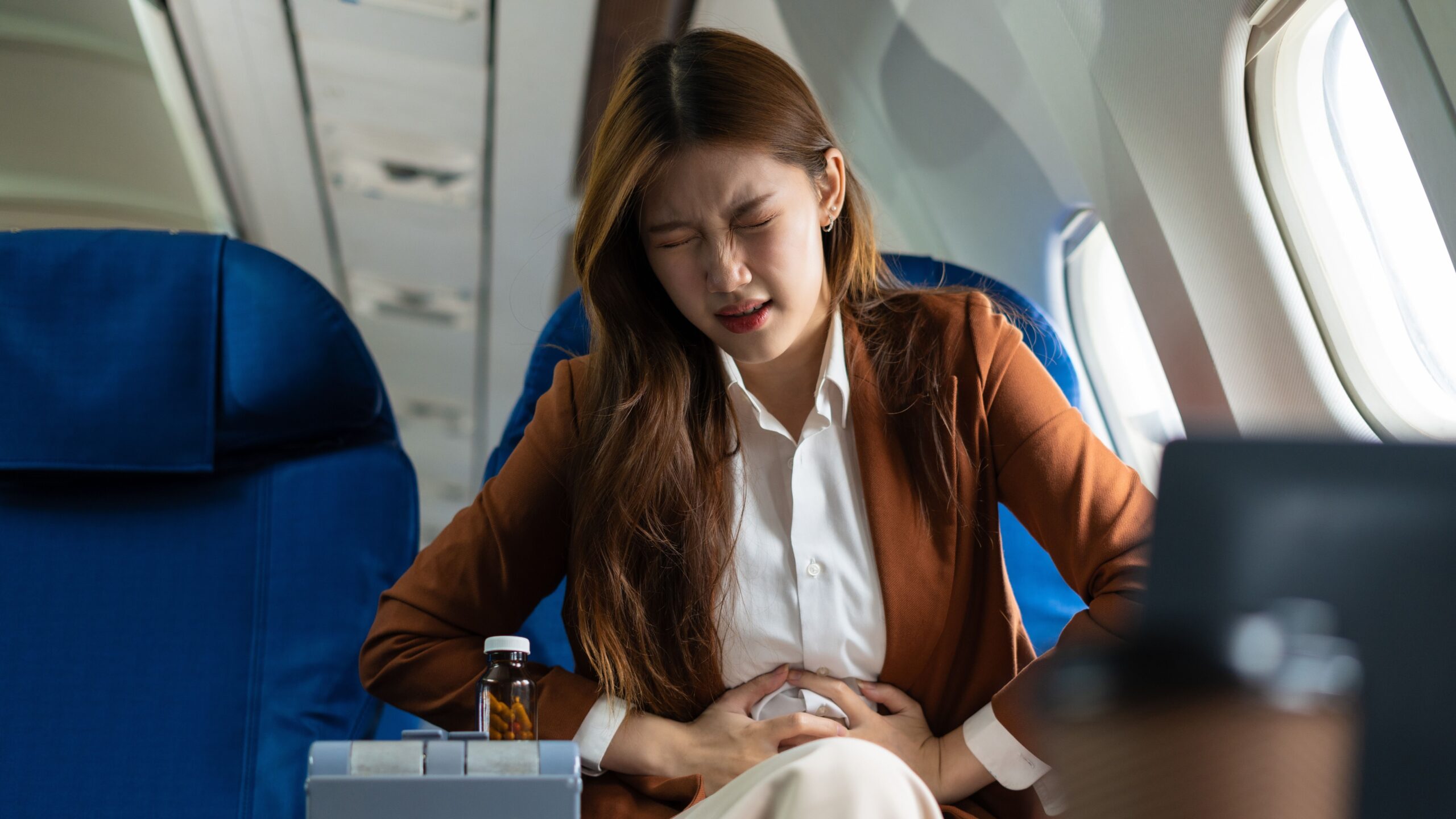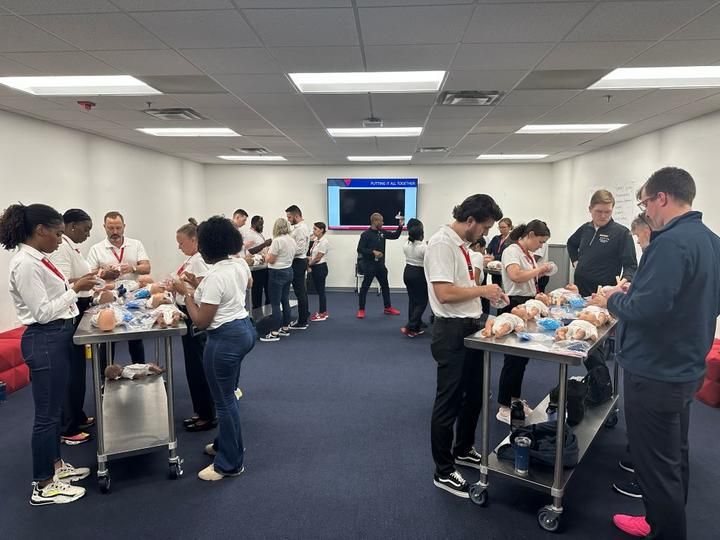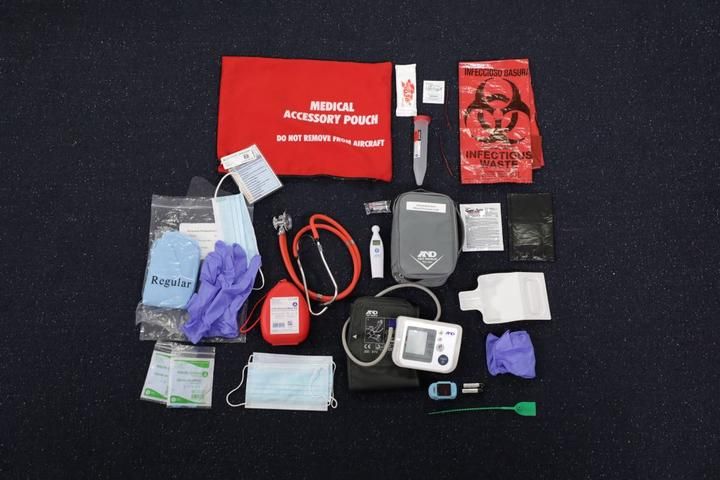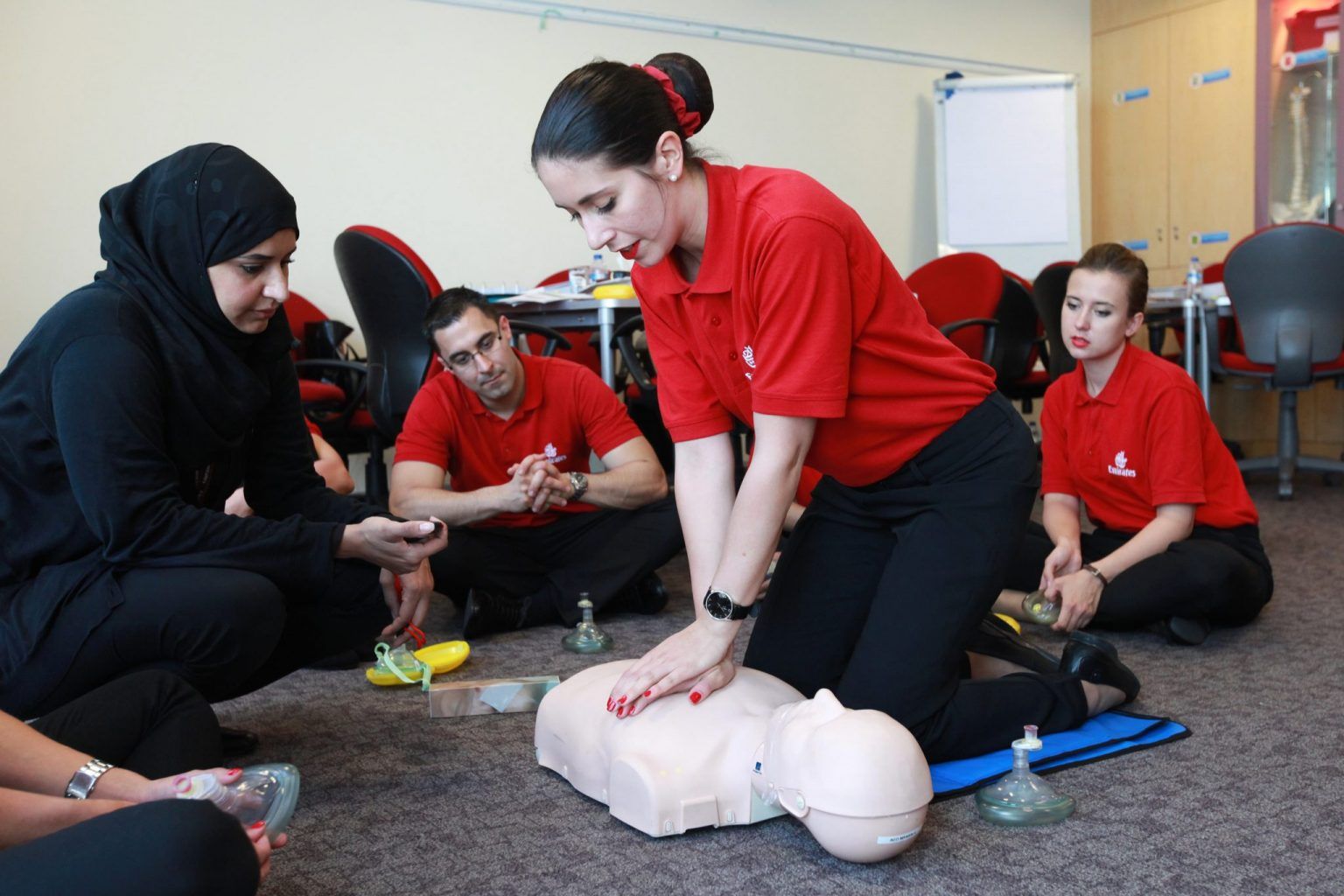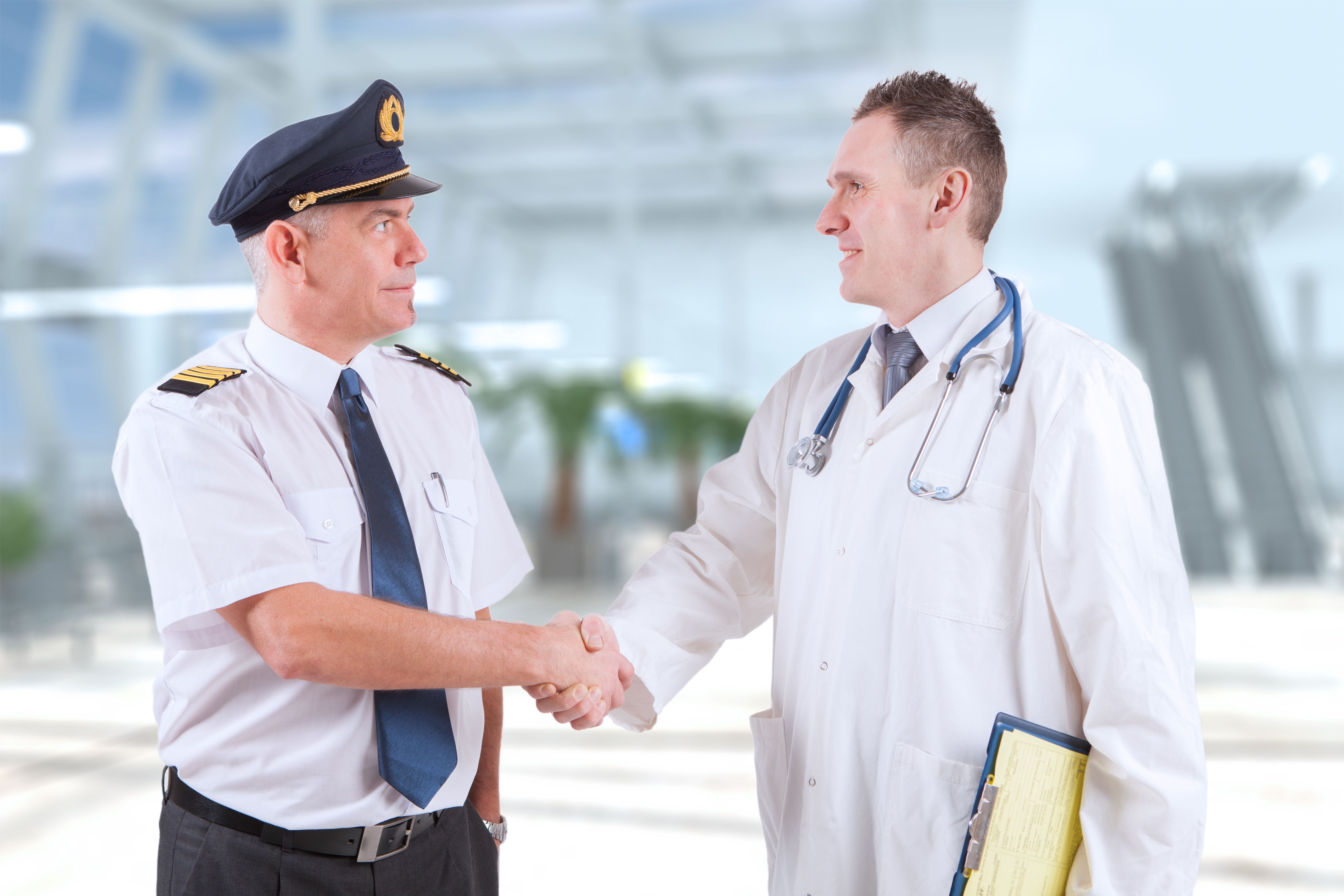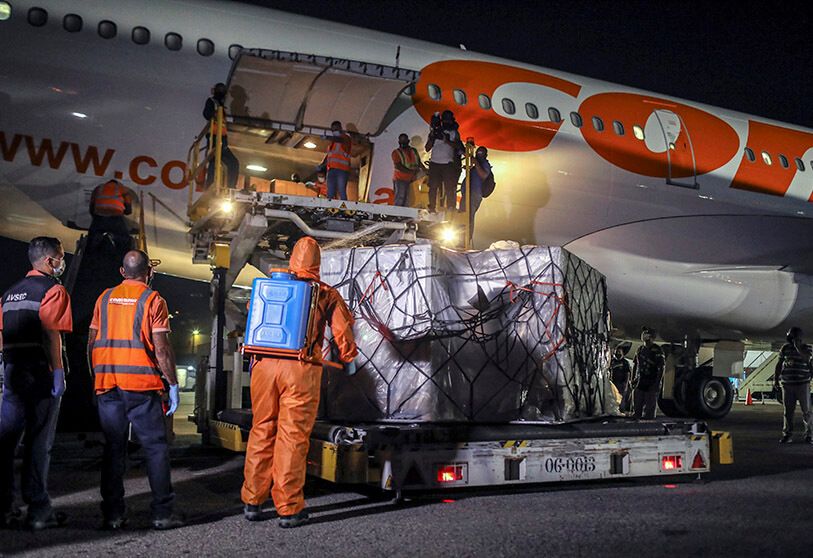Summary
- The FAA mandates AED machines and first-aid kits on flights, with trained crew accessing them.
- The SAMPLE acronym helps assess medical emergencies, while DRSABCD establishes consciousness.
- AMAA offers legal protection for medical professionals assisting in-flight emergencies, but jurisdiction can be unclear.
Aviation safety metrics, like accidents per million miles, have improved greatly over time. The pursuit of accident minimization strategies has helped, but no matter how safe flying is, medical emergencies can and do happen from time to time.
Crew are thoroughly trained to administer essential first aid and to take lifesaving action in the event of someone falling sick. In fact, you’re probably in better hands getting sick on an aircraft than you would be in your own home. Here’s what you need to know about medical emergencies and how airlines do their best to keep you safe.
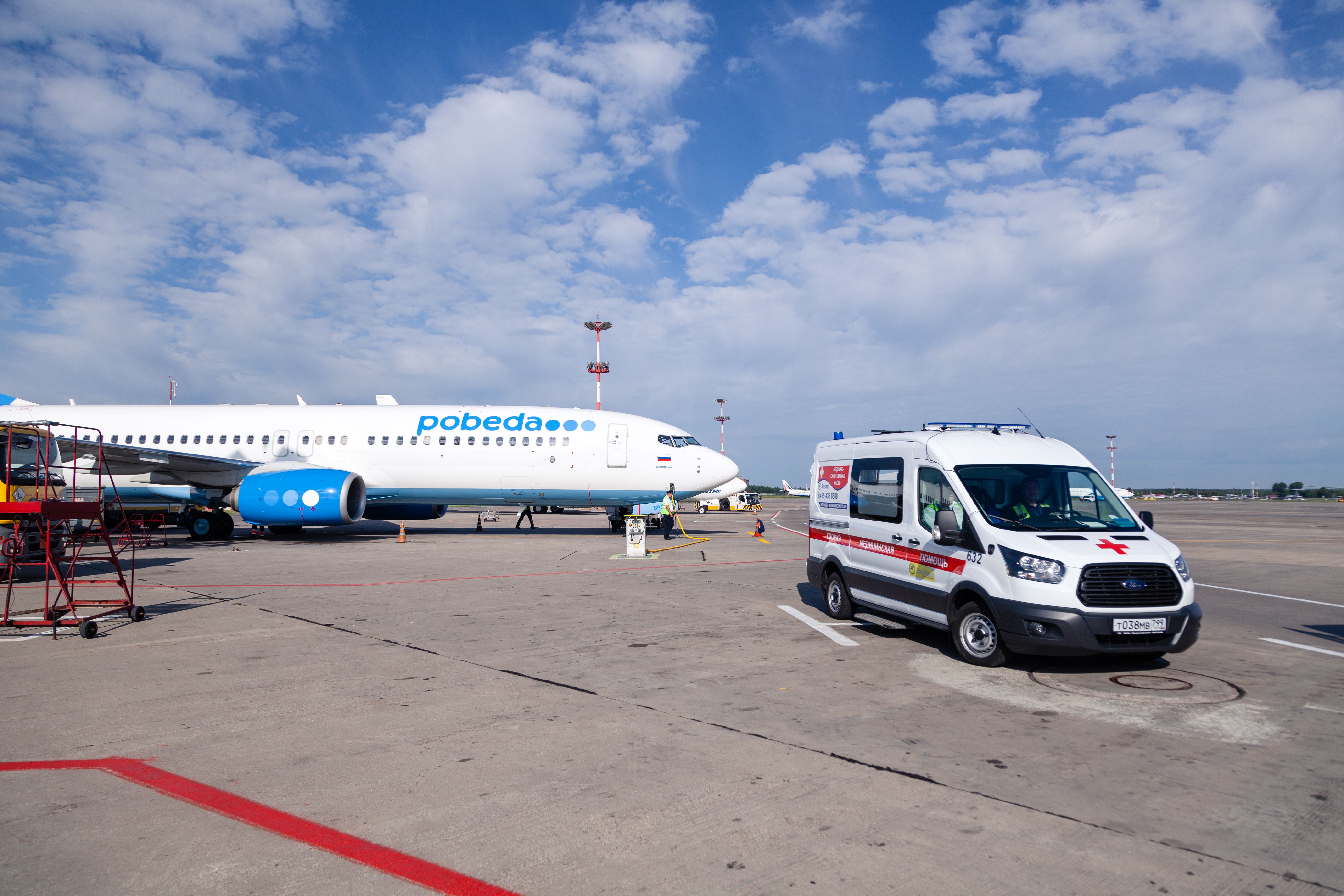
Related
What Happens During A Medical Emergency On A Flight?
There is plenty to consider if there is an emergency on board.
1
There’s a defibrillator and trained personnel on every flight
The FAA mandates an approved AED machine and a minimum number of flight attendants.
Jared Ross, an emergency physician based in Charleston and president of a medical education and consulting firm, EMSEC, LLC, once noted:
“We have very, very limited diagnostic and therapeutic equipment on U.S. flag planes.”
Although there are limitations to how much diagnosis and treatment can take place on a flight, the FAA has set minimum requirements to handle medical emergencies, including:
- Food and Drug Administration (FDA) approved AEDs (automated external defibrillator).
- A first-aid kit with supplies like bandages, wipes, stethoscope, gauze, bandages, IV equipment, and EpiPens.
- Medicines like antihistamines and epinephrine.
Photo: Delta Air Lines
The FAA mandates:
“ AEDs on all airplanes of air carriers operating under part 121 with a maximum payload capacity of more than 7,500 pounds and with at least one flight attendant. Affected airplanes typically would have a capacity for 30 passengers or more requiring at least one flight attendant.”
Medical equipment placed onboard to handle emergencies can only be accessed by trained crew members or people trained and qualified to use such equipment.
2
Cabin crew are adept at assessing and handling medical emergencies
SAMPLE encapsulates the essence of assessment of emergencies on flights.
If there is an emergency during a flight, the first crew to attend the scene will do a precursory assessment of the scene. The assessment can be quantified in the acronym SAMPLE. Patricia Green, journalist at Simple Flying and holder of a GCAA cabin crew license and medical, succinctly explains what the acronym SAMPLE, often used in assessing and handling medical emergencies, stands for:
- S – Symptoms – does the person have or did have any symptoms?
- A – Allergies – do they have any allergies?
- M – Medication – are they taking any medication?
- P – Previous history – do they have any medical conditions?
- L – Last meal – what and when did they last eat?
- E – Events – were there any events leading up to the illness/injury?
Photo: Delta Air Lines
The second crew member to attend the emergency will take on the role of a communicator. (S)he will notify the third crew member to collect the following items:
- First Aid kits
- Resuscitation kit
- Oxygen
- Defibrillator
After the communicator relays the emergency information to the senior crew member, the senior officer will inform the flight crew to check if any qualified, medically trained professionals are onboard.
3
There’s an acronym for every situation
If someone falls unconscious, DRSABCD comes into play (try saying that three times fast)
Acronyms might seem silly, but they really do help people to remember processes and procedures, particularly when under pressure. An example is when a passenger falls unconscious, and the DRSABCD procedure kicks in.
It’s most often implemented at the beginning of the first aid process. Patricia Green explains what each letter means,
- D – Danger – check for hazards that might be an issue
- R – Response – check the casualty for any response (if they are conscious or not)
- S – Send for help – communicate the situation to another crew
- A – Airway – check airway is open
- B – Breathing – monitor the breath and check pulse
- C – CPR – commence CPR if necessary
- D – Defibrillation – commence defibrillation if necessary
Photo: Emirates
If CPR becomes necessary, the chances of a medical diversion increase. Until the person gains consciousness (or the aircraft is on the ground), the crew will perform CPR. When the aircraft is on the ground, a team of medical personnel will be ready to treat the emergency.
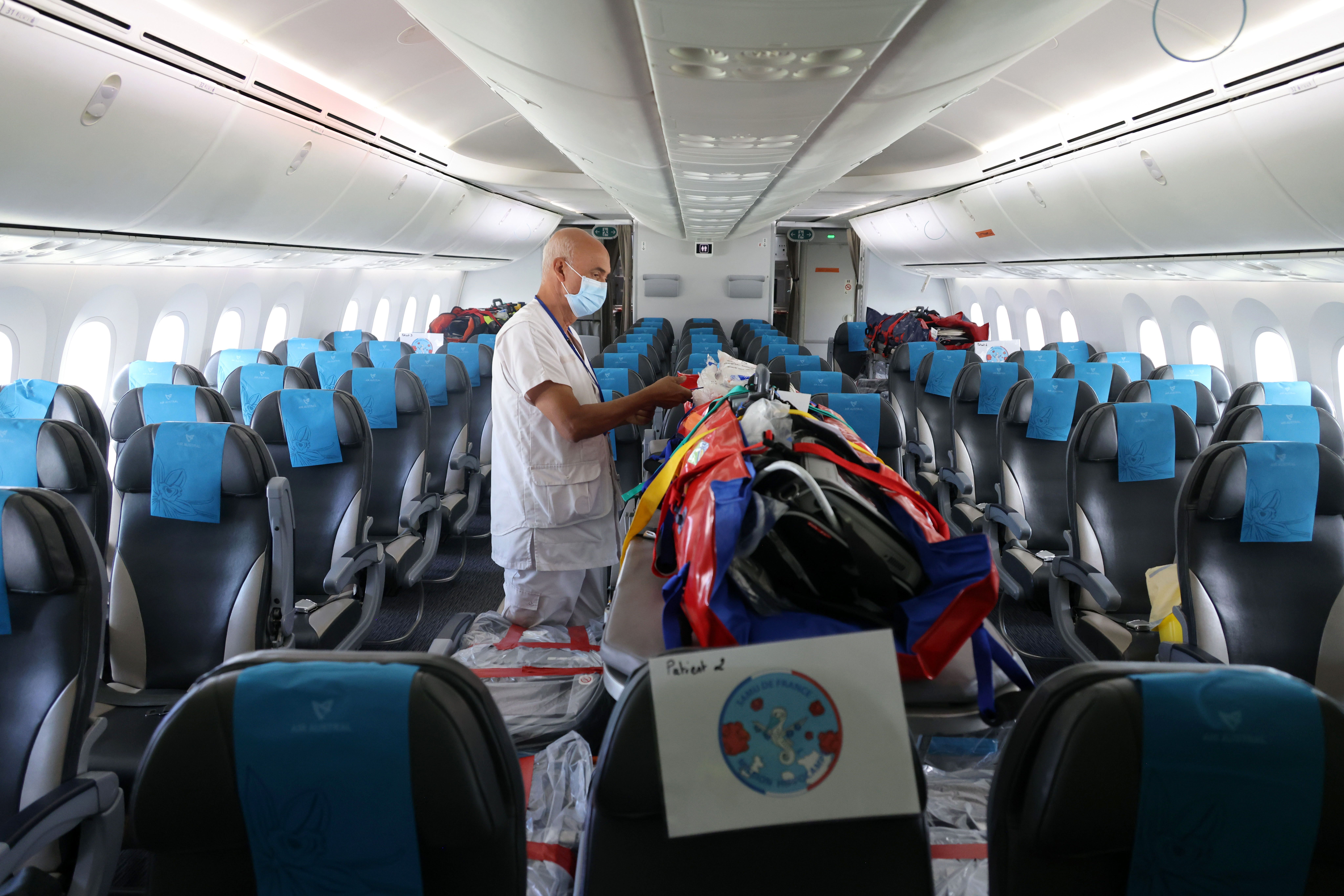
Related
Did You Know: Medical Repatriations Can Take Place Using Scheduled Commercial Flights
You may not need to call for an air ambulance if you get sick while traveling.
4
It’s very likely that, yes, there is a doctor on the plane
According to WYTV, 11 out of 12 flights have a trained physician onboard.
While around 70% of medical emergencies are handled by cabin crew without any assistance, occasionally, a doctor might be called in to take charge of an emergency on a flight. Such was the case when Dr. Susan Shepherd and Dr. Sij Hemal heard the call, “Is there a doctor on board?” from the cabin crew. A woman had gone into labor, and they were required to help with the delivery. Dr. Hemal hadn’t assisted a birth for a long time and recalled his experience to CNN:
“You can imagine that there’s nothing around you where you can land this plane. You’re at 35,000 feet. You’re just surrounded by blue all around you. You just think to yourself, ‘Okay, get it together,’ because if you’re not going to do this, something’s going to happen to the patient. You’ve got to give it your best shot.”
Photo: Monika Wisniewska | Shutterstock
While airlines restrict women from boarding flights when they are in the latest stages of pregnancy, birth tourism, lack of understanding, and deception sometimes mean babies are born in the air. But that’s not the only reason a doctor might be called to spring into action on their next flight. According to AFP Journal, the most common reasons for medical emergencies on aircraft include:
- Syncope (fainting): 33% of emergencies
- Dyspnea (shortness of breath): 10% of emergencies
- Chest pain: 7%
- Neurological conditions (stroke, seizure): 5.5%
- Traumatic injury: 5%
- Psychiatric symptoms: 3%
- Allergic reactions: 1.6%
- Cardiac arrest: 0.2%
While many of these ailments are well within the scope of the cabin crew to administer first aid, they will sometimes call for a doctor to get a second opinion and ensure the best care for their passenger. The Aviation Medical Assistance Act (AMAA), sometimes colloquially known in the medical field as the “Good Samaritan Agreement,” protects individuals from legal liability for helping in an onboard medical emergency.
5
But doctors are not protected from gross negligence
There’s being a ‘good samaritan’ and there’s stepping over the line…
The Centers for Disease Control and Prevention reports that although the 1998 Aviation Medical Assistance Act (AMAA) offers some protection, it doesn’t cover willful misconduct or gross negligence. Further, CDC explains:
“ …it is unclear what entity has jurisdiction over liability for care rendered; the country where the aircraft is registered might have jurisdiction, or jurisdiction could be based on the aircraft’s geographic location at the time an incident occurs. In other cases, the medical responder’s licensure country is the jurisdiction for liability. Jurisdiction might depend on whether the flight was in the air or on the ground when the incident occurred. “
Photo: Chinese Embassy in Venezuela
If you’re a medical professional, there are a few things to keep in mind while responding to medical emergencies while flying:
- You might want to pay attention to passengers’ “Do Not Resuscitate” orders. Despite such orders, airline policies might dictate that flight attendants attempt resuscitation.
- The US-licensed healthcare providers may or may not respond to emergencies on a flight. Their decision to respond is ethical, as the story of Dr. Hemal, as described above, exemplifies.
- While clinicians in nations such as Canada, the United Kingdom, and the United States do not have to attend to in-flight medical emergencies, some countries might require clinicians to do so.

